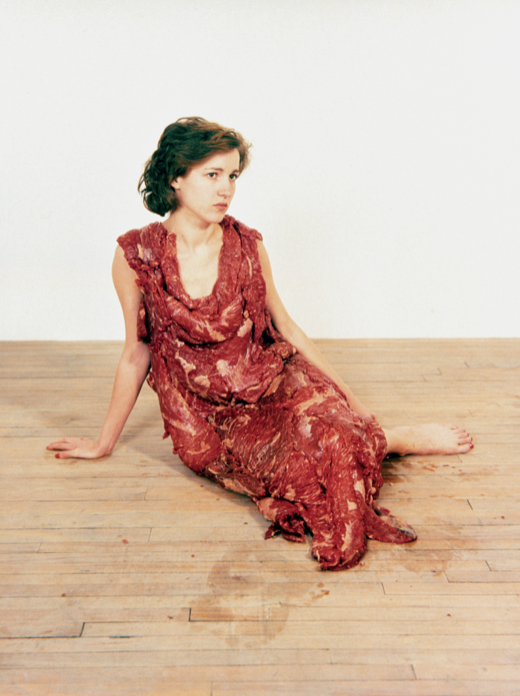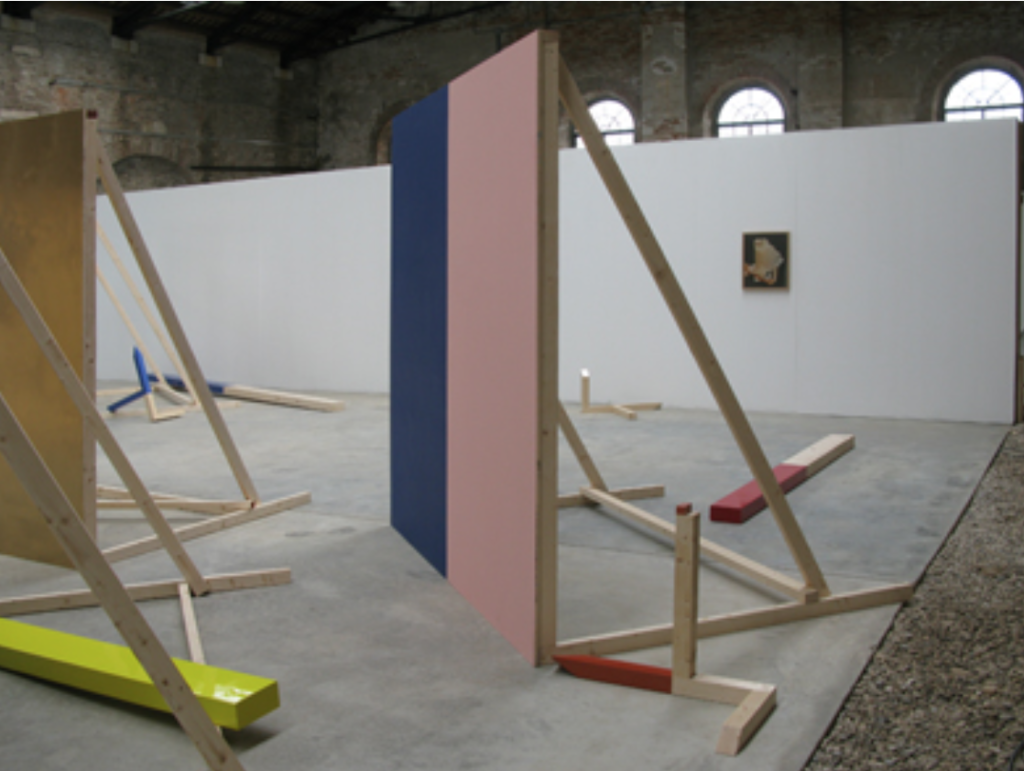By Alina Zalyaletdinova, Bachelor of Arts in Cultural Studies of the School of Advanced Studies (SAS), University of Tyumen.
In the frameworks of the CYLAND Intern Program
Contemporary art challenges the classical museum approach to storing art objects and forcing it to evolve. In this regard, many world museums and art archives turn to conceptual storage, which considers not only the object itself, but also its concept as a unit of archival storage. Keeping a concept means that the public will see the work ideologically first of all. In turn, the idea of an art object is closely intertwined with the artist’s intention and the eternal question “What was the author trying to say?”. This opens up both a huge scope of possibilities and a series of problems for a potential curator. This is especially true when the artist is no longer alive. Under such circumstances, conceptual storage is obviously difficult to implement (unless by some miracle authors have left a detailed description of their work and corresponding storage instructions). Fortunately, in addition to the author’s view, there are other factors that set the direction of the concept of an art object. We will talk about these factors, methods and the world practice of conceptual storage in this article.
Why is traditional museum storage practice no longer a universal solution for all art objects?
It is worth briefly reflect on the reasons why classical museum storage is becoming more and more problematic in the art community.
Firstly, contemporary art sets itself the task of changing the norms of traditional art, and this implies the use of new forms, tools and of course materials. Since the early 1960s, artists began to redefine the role of an object of art as an immortal relic, which made their work too complex for the traditional method of museum storage. For example, Lady Gaga borrowed the idea for her famous meat dress from Canadian concept artist Jana Sterback. For obvious reasons, her Vanitas: Flesh Dress for an Albino Anorectic is hard to imagine as a classic museum item.

Secondly, many genres of contemporary art (for example, performances and installations) are directly related to the time and circumstances of their creation. Conservation of the physical part / basis of a work is usually not sufficient to preserve its contextual links / site-specificity. Moreover, the meaning and perception of a work can change many times from the moment of its first exposure / showing. It is worth mentioning the installation by Marianne Vierø Indoor Gardening, which was recreated by the artist four times. With each new version, the forms of objects used by the author and their location were radically changed. The artist stated that all four times she solved different artistic problems, and lost interest in the art object as a result.

Artist intention
Contemporary conservatives use different tools to mediate author’s meanings, and the most frequent is interviewing the artist. Voices in Contemporary Art (VoCA), a nonprofit American organization, trains museum staff in interviewing artists. Their partner, the International Network for the Conservation of Contemporary Art (INCCA), promotes a collaborative approach between curator and artist. This approach has a significant advantage, since it allows the museum to convey the meaning of the art object the way the artists themselves wished to convey it. However, for all its convenience, interviewing is not the ideal solution to retaining concepts. Glenn Wharton (who worked at MoMA), in the article “The Artist’s Intention and the Preservation of Contemporary Art,” talks about the long-term practice of collecting and studying the preferences of artists. She noticed that the questions she asked had a lot to do with the artist’s response: “I sought their opinions on current options for treatment and display. Sometimes I realized that their responses reflected other concerns in their mind, including their present career advancement and their future reputation… my framing of topics and guiding the conversation influenced what they said. These recognitions of additional agendas and my own impact on what was said further complicated my references to their comments as expressions of original intent.” Wharton also voices concern that the artist will be more concerned with the initial idea of his project than with its final implementation (Wharton 2015, 2).
Analysis of the art object
William Kurtz Wimsat and Monroe Beardsley, in their essay “The intentional fallacy” (1946), argued that the best way to evaluate a work of art should be through direct analysis of the subject. In their opinion, lengthy descriptions of the author’s intentions only distract from the work itself (Wimsat and Beardsley, 1946). On the one hand, freedom from the category of the author’s intention provides a museum or archive with more room for interpretation. On the other hand, this approach raises the question of boundaries, principles and ethical norms in working with a work of art. In order to avoid a conflict of interpretations arising from the different social and professional positions of the artist and the curator, it is necessary to focus on the formal characteristics of the work and clearly outline the methodological guidelines on the basis of which it is contextualized. Analysis of the work itself is undoubtedly an important part of preserving the concept, as it determines the parameters of its future exposure and perception by the public.
Determining the position from which an art object is interpreted is important in cases where the author’s intention comes into disagreement with the form of its public display. For example, the work of the famous Dutch conceptual artist Jan Dibbets The Shortest Day at the Van Abbemuseum was provided by the artist in the form of slides that were to be projected on the wall. The idea of the work was to demonstrate the change of day, which was unattainable in practice: the work was so extended in time that the viewer left without waiting for the transitions planned by Dibbets. To solve the situation, the Museum asked the artist to create an additional collage, which was placed parallel to the projection (Stigter 2016, 12). It was decided that this form of exhibiting the project would not lose its original idea, since the photo collage would still reflect the concept of variability.

External context
Finally, there is a third factor important for understanding the concept – context. Technical innovations, political events or cultural changes have a large impact on production and subsequent perception of work. Is the question of methods of contextual reading of a work central to the work of a conservative? An example of a work requiring mandatory conceptualization is the work “Belarus” by Artem Loskutov, painted with a police baton.

Computer scientist John Maeda suggests filming the reaction of visitors interacting with the work, and showing these videos when the work is subsequently exhibited (Wharton 2015, 6): the way visitors react to an art object is a direct demonstration of the dialogue between the artist and society.
Russian experience of conceptual storage
Conceptual storage is still quite a new and emerging approach in museum practice. In Russia, this type of storage exists in the Pushkin Museum, which also collects digital art. The museum holds public events through which artists can comment on their own work. Also, during the process of transferring work to the collection, the administration and the author reach an agreement that complex art objects must have a conceptual description. The artist can provide additional information, including initial sketches of the project.
Another example is the Garage Museum of Contemporary Art, which preserves tickets, posters and other paper ephemera as evidence of the institutional life of a work of art.
Bibliography
Stigter, Sanneke. “Between concept and material. Working with conceptual art: a conservator’s testimony.” (2016).
Wharton, Glenn. “Artist intention and the conservation of contemporary art.” AIC Objects Specialty Group Postprints 22 (2015): 1-12.
Beardsley M., Wimsatt W. K. The intentional fallacy //Literary Theory: An Anthology. – 1946. – P. 30-35.
